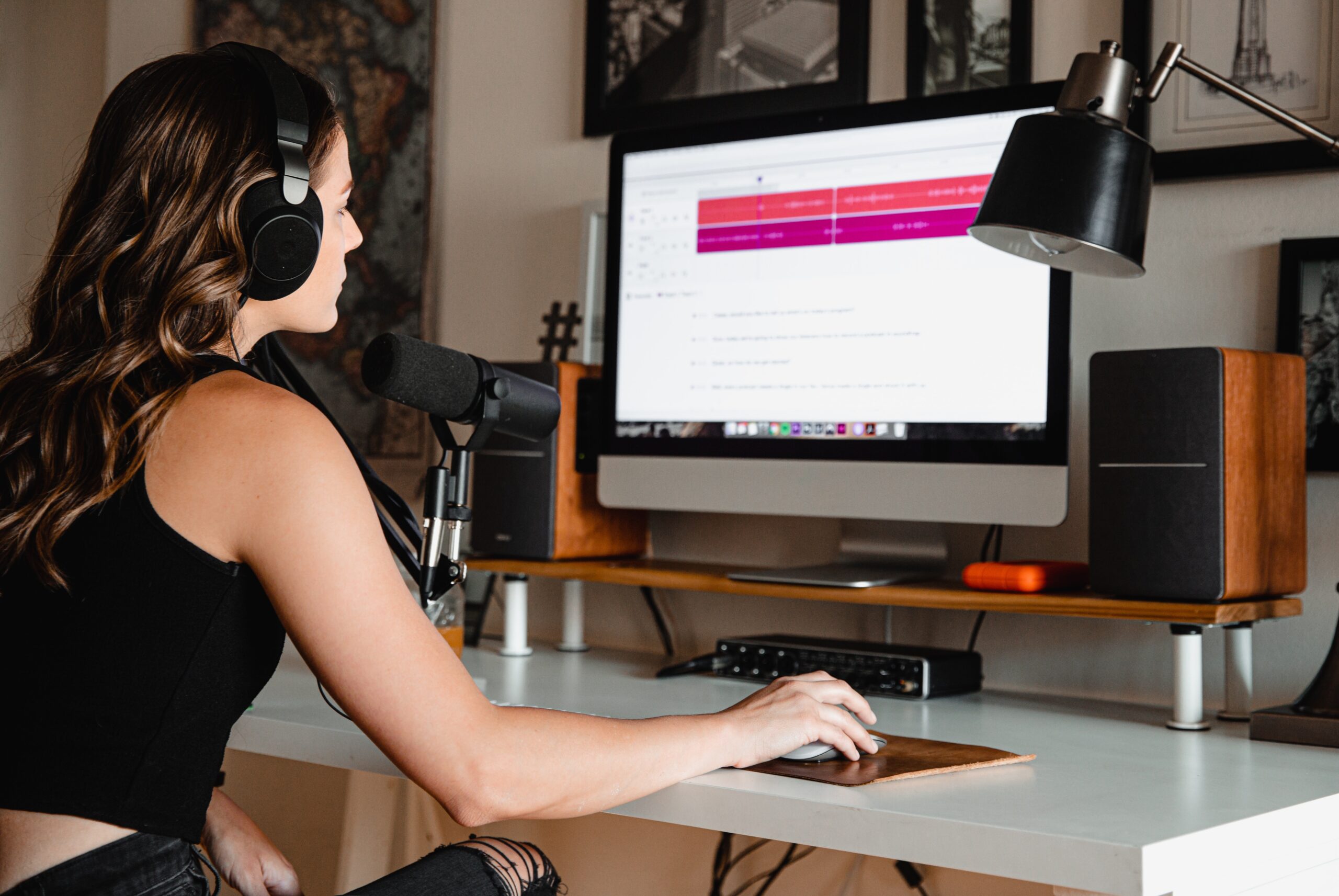Choosing The Right Audio to Text Solution For You
Human Transcription Services vs a Transcription App
Transcribing audio to text requires a certain degree of skill. It is often easier to outsource your transcription to companies that offer human transcription services. Alternatively, you can use a transcription app to transcribe audio to text. However, the accuracy of the transcription may not always be as high as with human transcription services. In this article, we’ll discuss both approaches so you can find the right one for your unique requirements.
2 Steps to Transcribe from Audio to Text
As you try to figure out how to transcribe a recording from audio to text, there are a number of avenues worth exploring. There are also a key few factors to consider too. You’ll want to choose the best method for your situation, depending on your availability of time and how comfortable you are with computer programs. Here are a few best practice tips:
#1 Find the Right Program
There are many software applications that transcribe speech from various sources, including dictation tools and voice-to-text services like Google Translate or Speech Recognition in Microsoft Word. Some programs will allow users to dictate directly into their computers; others require that you record yourself before starting the process.
#2 Prepare the Recorded Audio
If using a dictation program such as Dragon NaturallySpeaking or Nuance Dictate 7 Premium Edition (Windows), prepare by setting up appropriate microphone settings so that your computer can pick up all sounds clearly without distortion.
File Formats and Audio Quality
First convert the audio file to a format that your transcription software can read. Depending on the file, this may be in a MP3 or WAV format. If you are transcribing from audio, ensure it is clear enough for you to hear the words clearly and accurately. Background noise and audio quality can make transcribing challenging and frustrating.
Now that you have the audio file in the right format, you can begin to transcribe. This will likely require listening to the recording several times over so that you can get an accurate idea of what was said.

Now that you have finished transcribing, you can begin to edit the transcript. At this stage do any necessary corrections or edits based on your notes, as well as add any additional information that may be relevant. Finish by listening to the recording one last time to double check what was said before adding in punctuation and formatting, time stamps (if required), and final grammar checks.
Audio to Text Transcription Programs
Transcribing audio to text can be done using a program that automates the process. To get started, you’ll need to import your audio file and set up the transcription settings. Once you’ve done that, you can start the transcription and download it when it’s done. Although the exact methods may differ, the process usually involves the following steps:
- Click on “Import” and select an MP3 or WAV file from your computer that contains audio you’d like to transcribe into text format (e.g., an interview, board meeting, etc.).
- Click on “Settings” in order to configure how fast or slowly each person speaks during their recording, so that you can better understand what they’re saying. Especially useful when speakers are talking quickly or slowly during conversation sessions with others around them. Ambient noise from work or home environments also tend to interfere with quality and clarity. It is therefore crucial to adjust accordingly.
From here the process is rather self-explanatory. Whether you transcribe from audio to text a video or any other source, it’s important to adjust the settings according to the uniqueness of your project. As you might expect, it will take some tech savvy to get it just right. If all else fails or you find yourself in the midst of a time-sensitive project, it may be better to outsource.
Outsourcing to Human Transcription Companies
You can outsource your transcription to companies that offer human transcription services. This is the preferred method by many established companies that place a high value on speed, accuracy and data protection. Even with the rise of automated services, a human transcriptionist is still better equipped to work on your project. There are quite a few options to consider if you’re in the market for a human transcriptionist.
If you want to outsource the task of transcribing audio files and creating transcripts, there are plenty of companies online who will do this for you at a reasonable price. Some will even give you an estimate before they start working on your project so that you know exactly what it will cost and when they expect to finish. These types of sites often have strict deadlines for turnaround times and you are advised to check their policies before sending off any files or money.

If you don’t have time to outsource your transcription, or if you want to do it yourself, there are plenty of apps available for download on your smartphone or tablet that will help you with the process. These apps are designed to be used by people who have no experience transcribing audio files and they can make it easy for anyone to create transcriptions in a matter of minutes. Be advised that your data may not be protected, especially in the event of these services being offered for free. While there may not be a monetary component attached, your valuable intellectual property may very well be at risk.
Choosing the Right Audio to Text Option for your Project
With everything you’ve now learned in this article about how to transcribe from audio to text, it really is as hard or as easy as it seems. Despite AI providing far more options for automation, it has yet to replace the human element. Automated options may be a consideration, but the benefits and greater long term returns of working with a human transcriptionist still outweigh AI. Whichever option you opt for, ensure it best suits the requirements of your project.
